Quince: Rewriting Ethnic History
(Gerry Furth-Sides) The first time I saw quince was in the form of paste. Owner Alex at La’Española showed me the inviting flat, gelatin rectangles when I wrote about Spanish Thanksgiving and the dishes that would have been served at the event. I fell in love. Slices were the perfect board match for rustic bread, manchango cheese and almost fig bread.
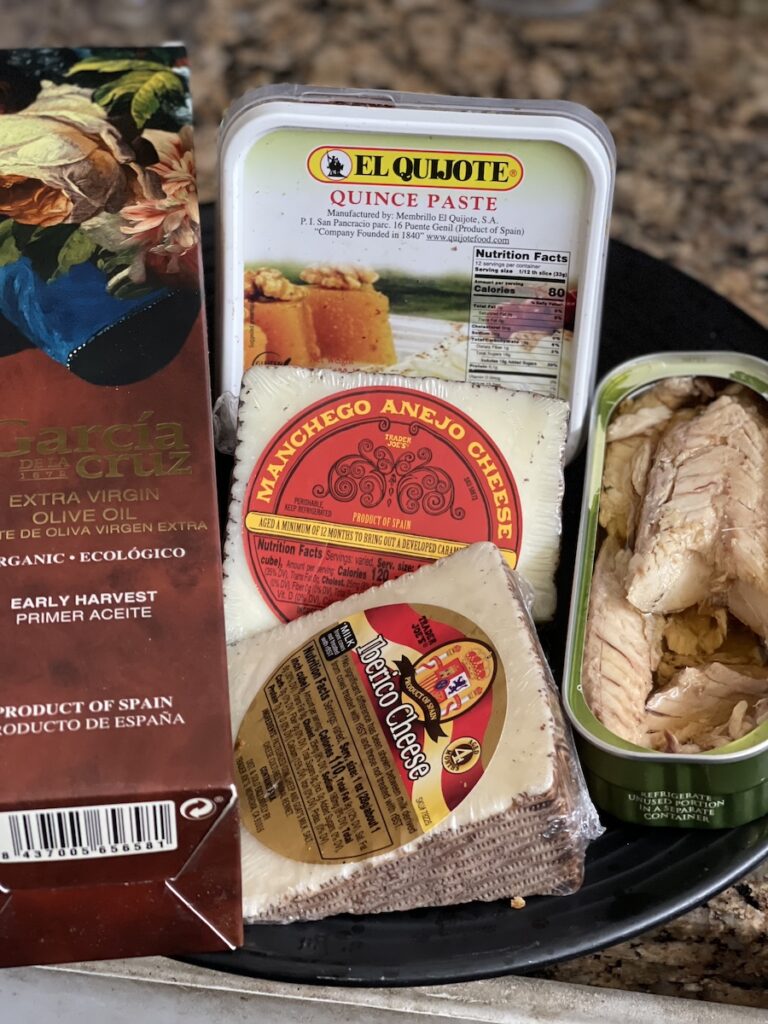
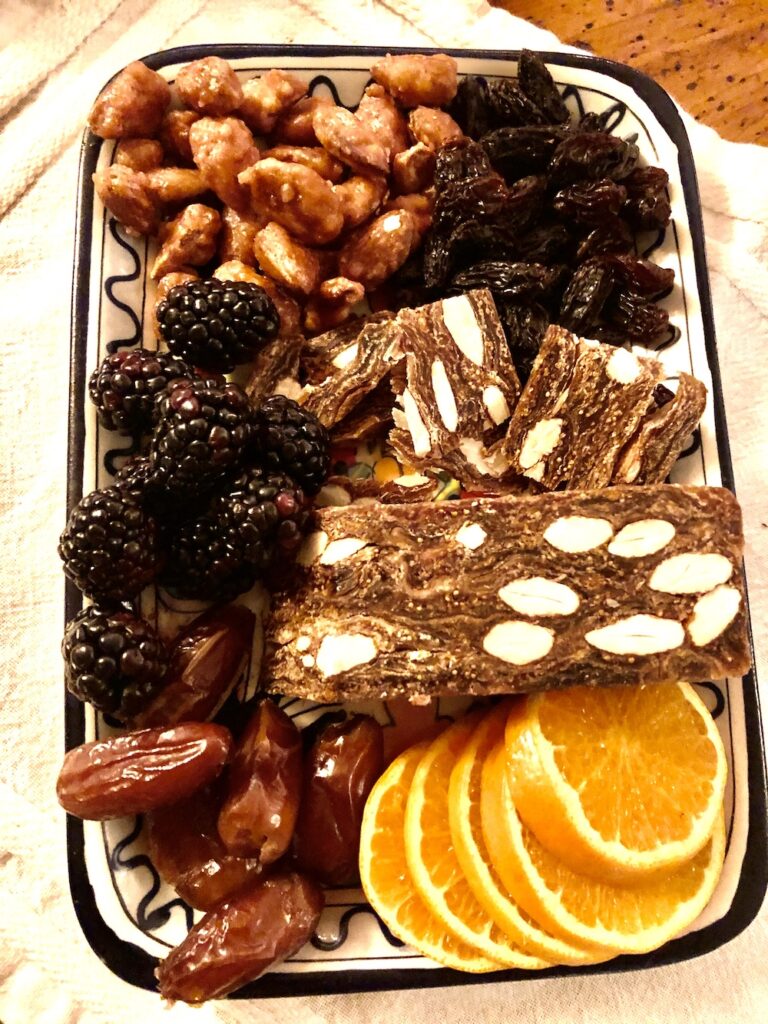
So this year when Melissa’s Worldwide Produce introduced Quince I had to try it. The retro packaging alone is enough to make anyone fall in love with it.
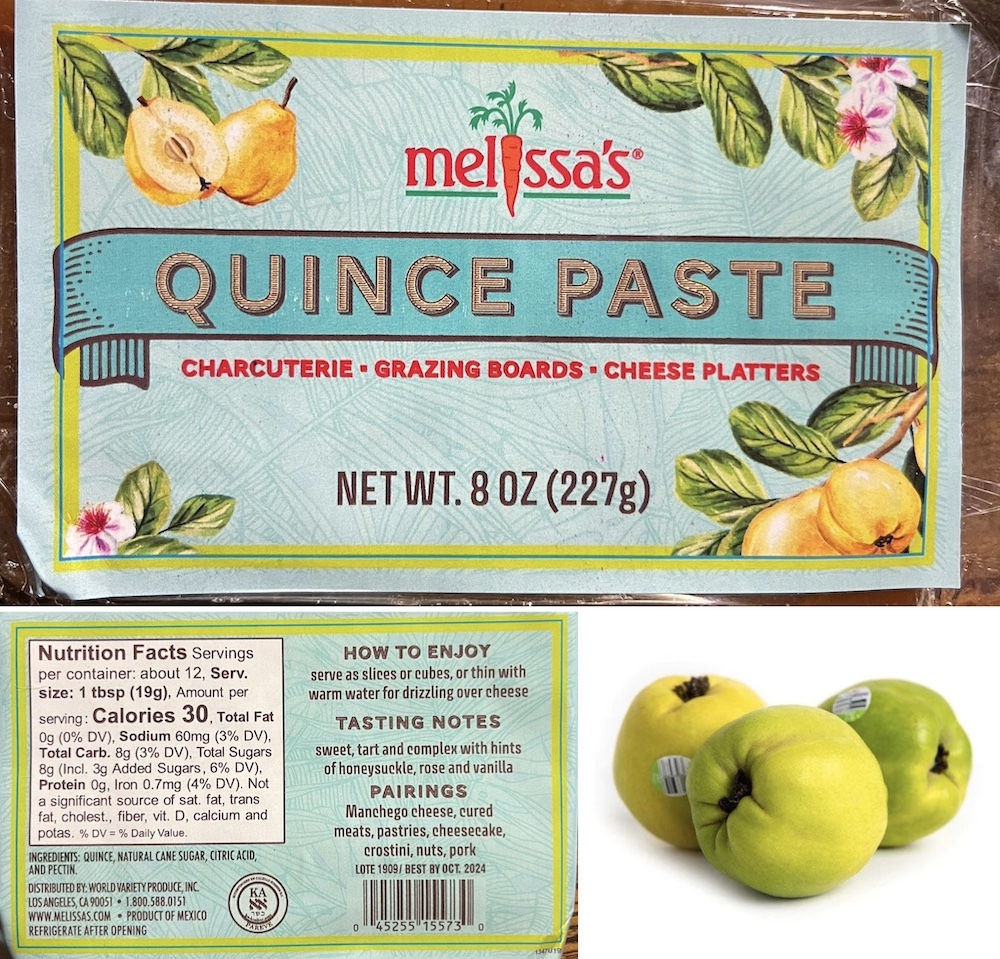
This turns out not to originate in Spain at all. Another surprise was when I talked to my own family about it, turns out that both sides not only know of it but are very familiar!
Quince tarts were my mom’s brother’s favorite dessert in Czechoslovakia. My only aunt on my dad’s side of the family had a quince tree growing in her Larchmont, New York garden and made desserts. My cousin remembers her mom saying about the fruit that requires so much care, “they such are a nuisance!”
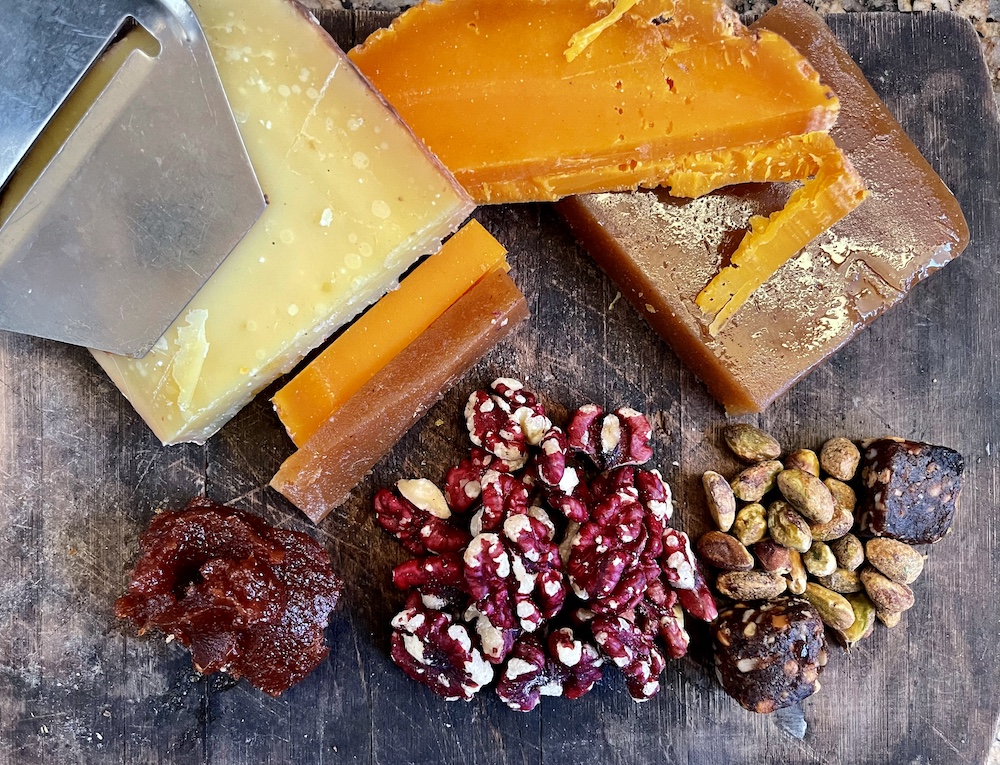
Quince does turn out to be the only member of the genus Cydonia and is native to Iran, Turkey, and possibly Greece and the Crimean Peninsula. The fruit has a strong aroma and is astringent in the raw state but makes an excellent preserve and is often used to give flavor and sharpness to stewed or baked apples.
Nilay Senel told us that the quince in Turkey is softer and can be eaten raw, as well as in compotes and sauces.
“Membrillo” is the diminutive of “mimbre”. Quince has always been prized for its medicinal properties, and is known to have been cultivated in ancient Babylon. The Greeks were familiar a common variety of quince grown in Crete, in the city of Cydon, hence its scientific name of Cydonia oblonga.
The quince is native to the Caucasus and northern Persia, but cultivation spread to the eastern Mediterranean basin. Some theorize that the forbidden fruit of the Garden of Eden was a quince. In Greek legend Helen of Troy bribed Paris to award a quince to Aphrodite as the prize in a beauty contest. This started the Trojan War.
It’s a pome fruit, related to apples and pears. The ripe quince is a waxy yellow. All commercial varieties are too hard, sour and astringent to eat raw, but the quince’s whitish-yellow flesh softens and turns an attractive pink when cooked. Its high-pectin content makes it ideal for preserves, and its sharp, distinctive flavor complements a wide variety of dishes.
We added fresh Melissa’s Worldwide Produce apples and pears to one batch of sauced q
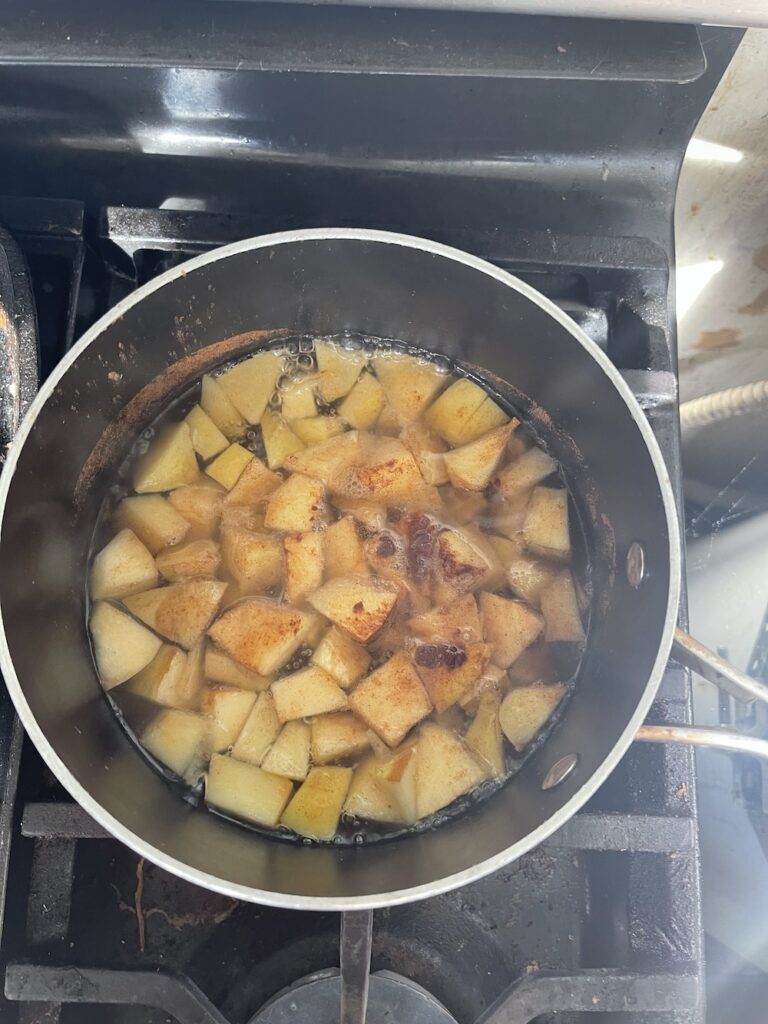
Medieval cooks regarded the quince as the most useful of fruits and spiced it with pepper, ginger, cloves, cinnamon and nutmeg. At medieval courts and banquets, nobles enjoyed quince jelly for dessert: cotignac in France, cotogna in Italy, and carne de membrillo in Spain, all still popular. In Tudor and Stuart times, quince marmalade, wrapped in gold foil, was regarded as an aphrodisiac.
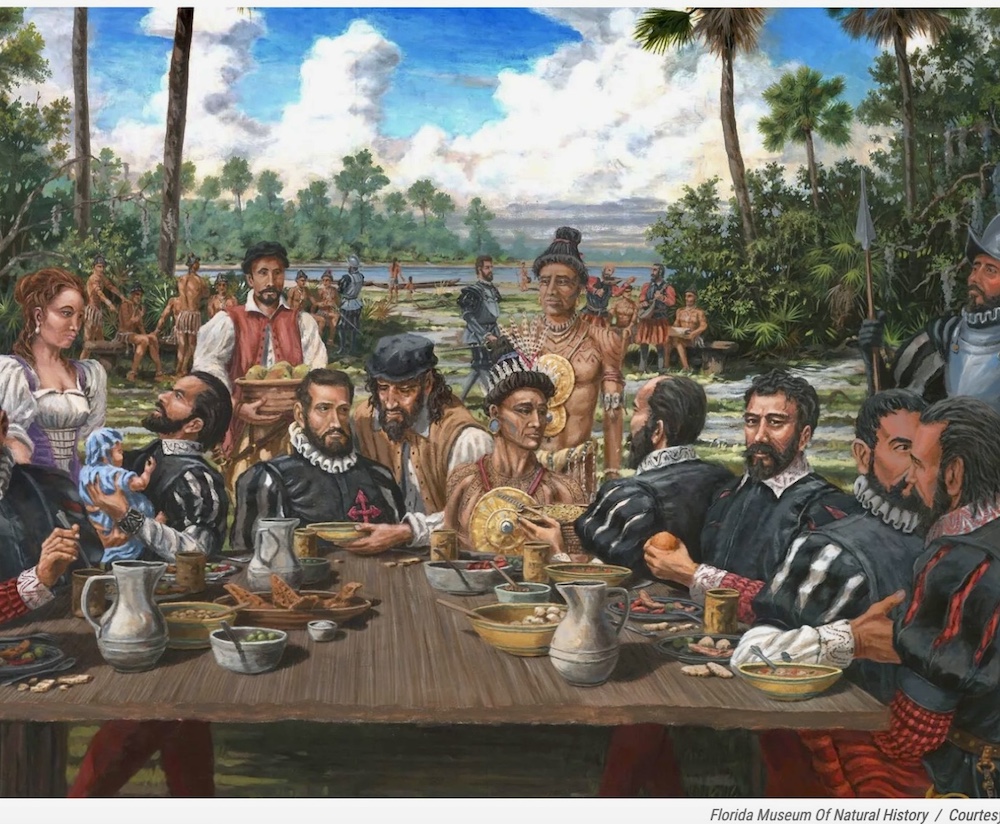
The persistent tart flavor of quinces counteracts the greasiness in meat and fowl dishes in rich cuisines, notably in Germany, Latin America and the Middle East. In Persian cooking, with its tradition of meats and sour fruits cooked together, there are many recipes for meat and quince stews. In Britain quince sauce is a traditional accompaniment to partridge, and the French roast quail with slices of the fruit.
In America quince have been popular since Colonial times for making jams and jelly, since they’re very high in pectin. Another common use is to add slices of quince to apple pie, which adds a fragrant, spicy dimension to the flavor. We made a gallette and would do this again (and again!)
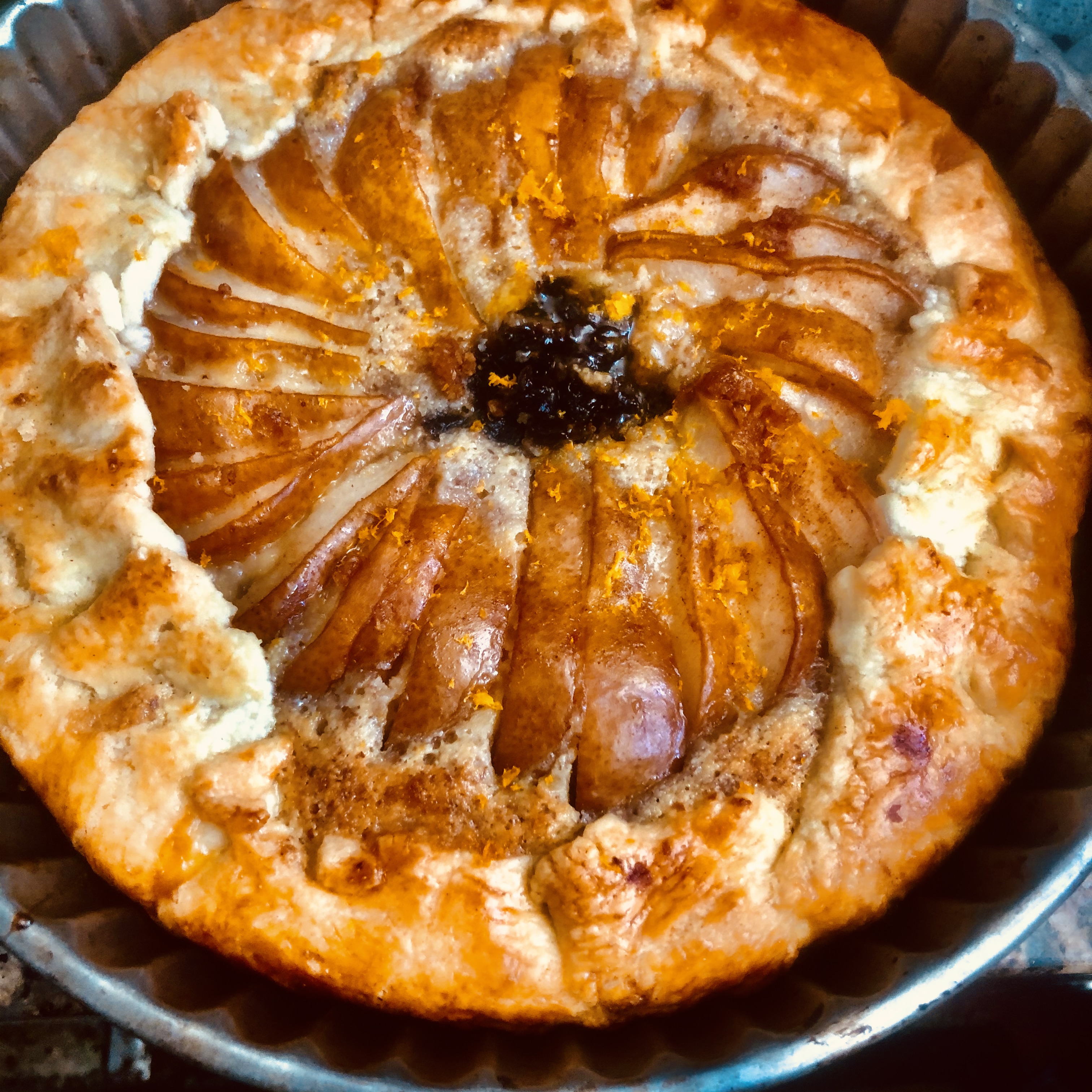
The main variety at commercial markets is the Pineapple, from California, where about 300 acres of quinces thrive in the San Joaquin Valley south of Fresno. The season runs from August into January or February, when a few quince are imported from Chile.



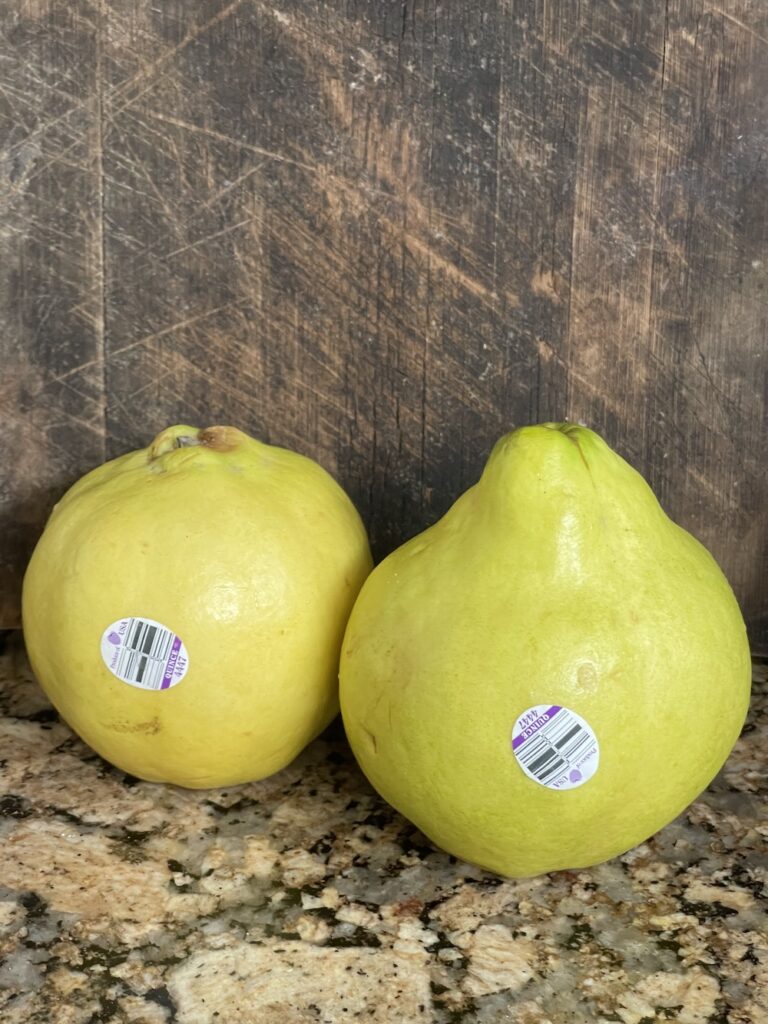


 Gerry Furth-Sides
Gerry Furth-Sides  Barbara Hansen
Barbara Hansen  Chef-owner Alain Cohen
Chef-owner Alain Cohen  Roberta Deen
Roberta Deen  Jose Martinez
Jose Martinez  Nivedita Basu
Nivedita Basu